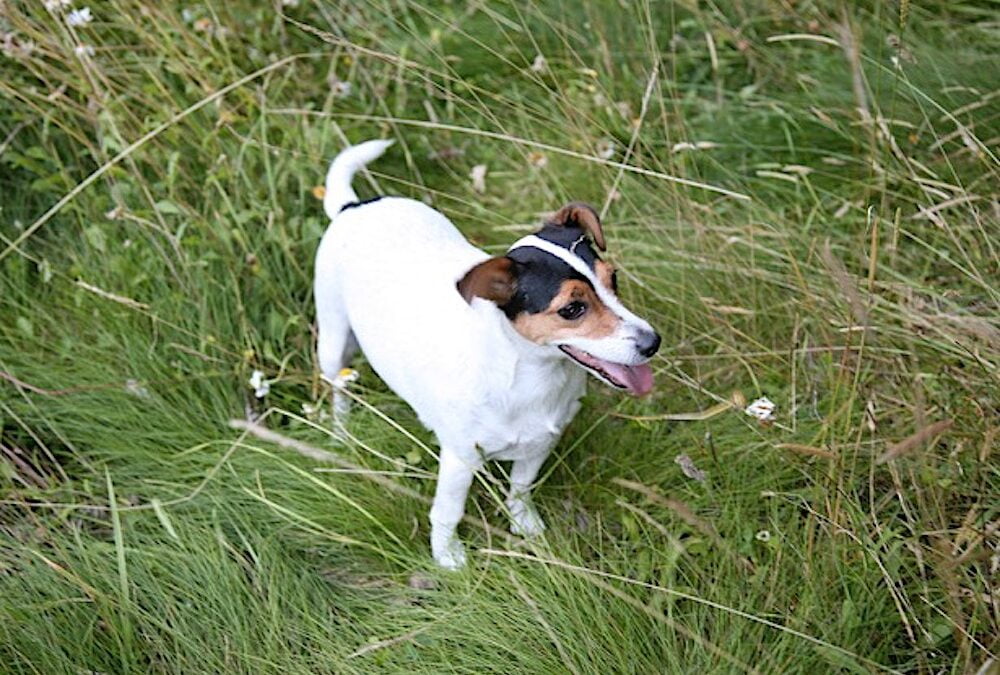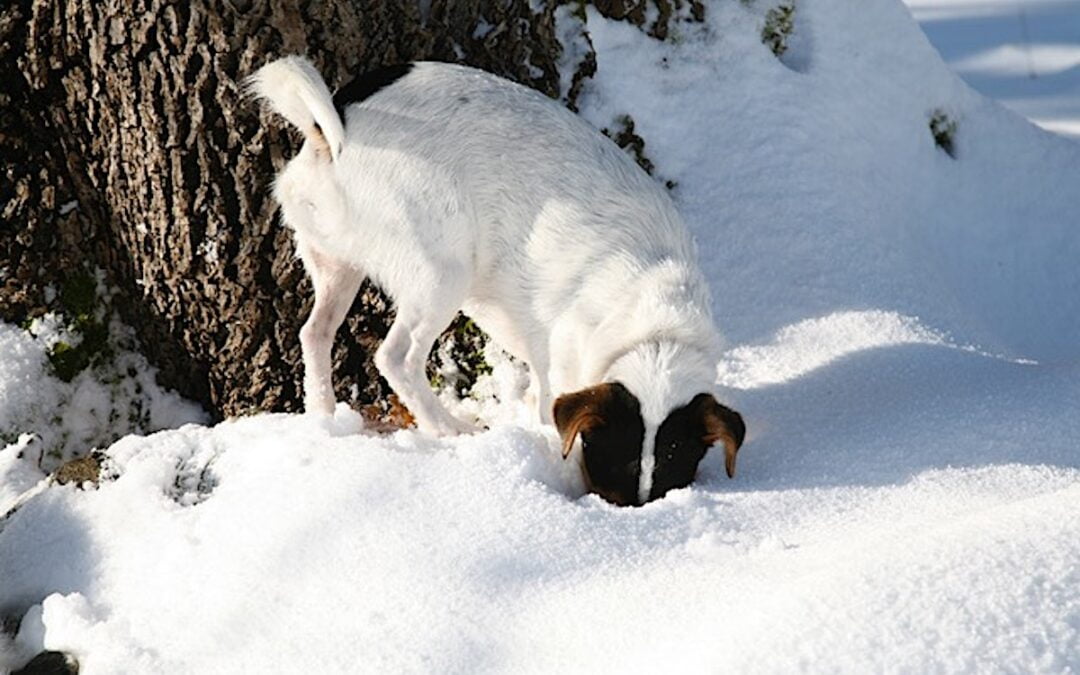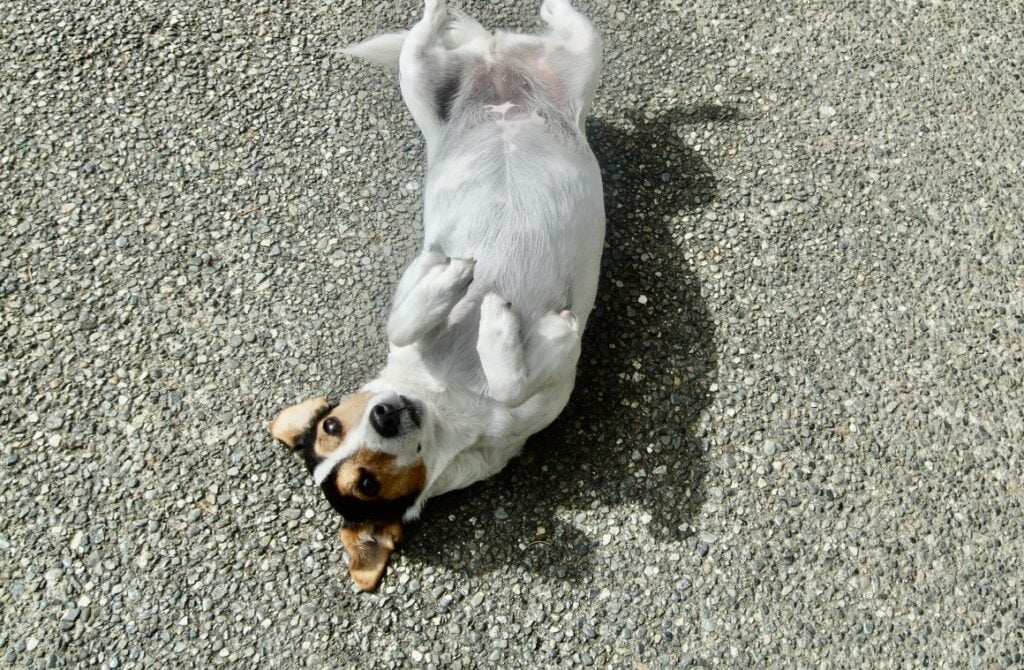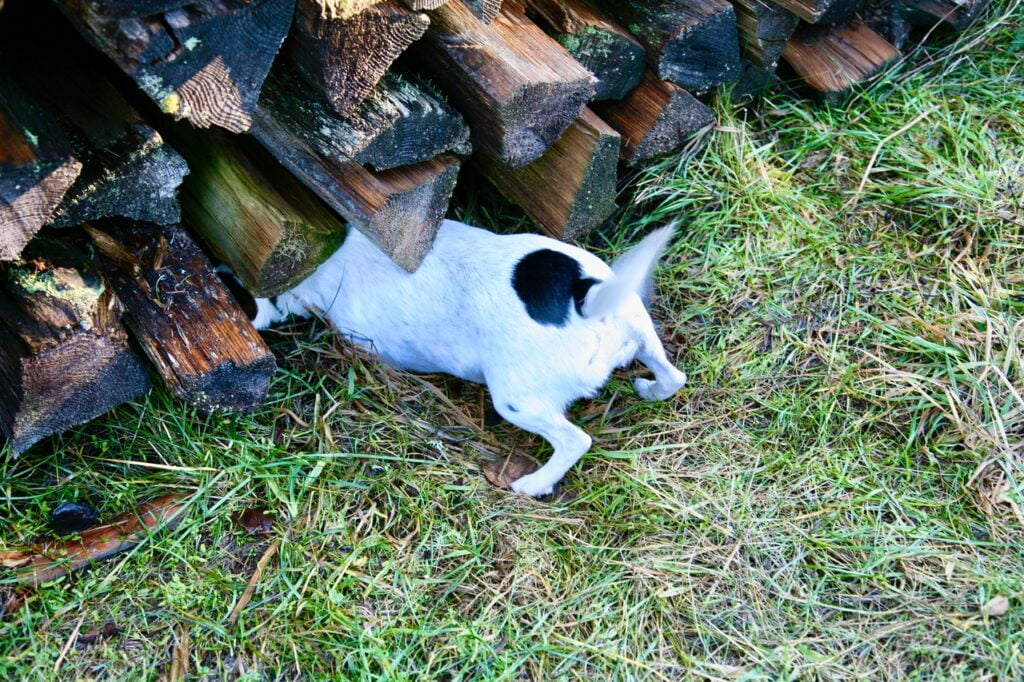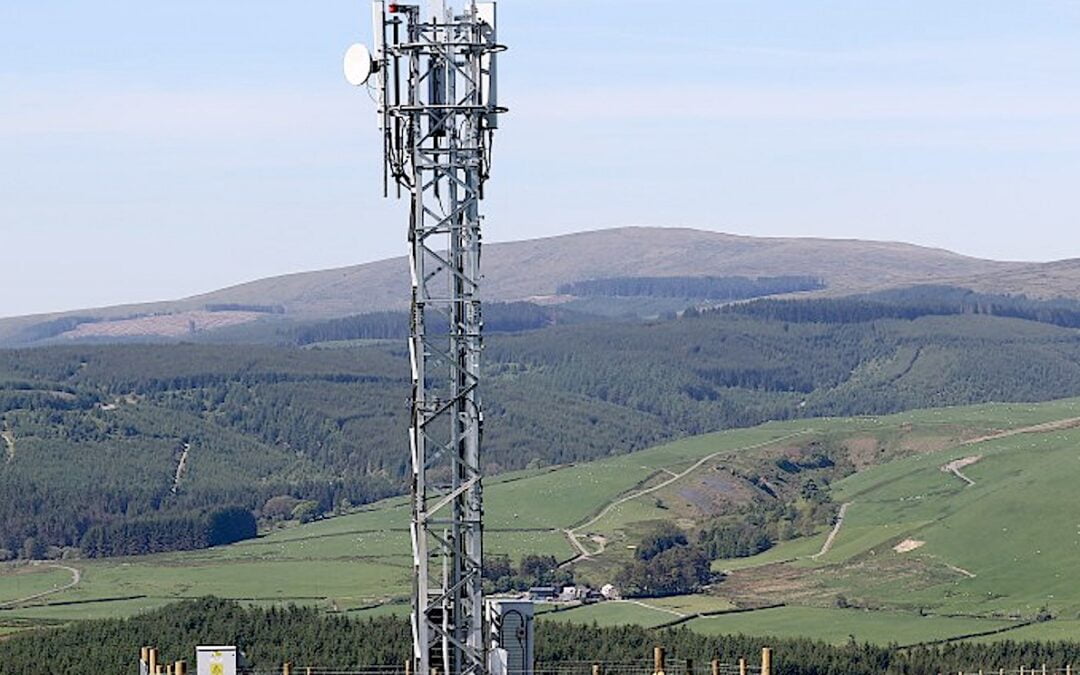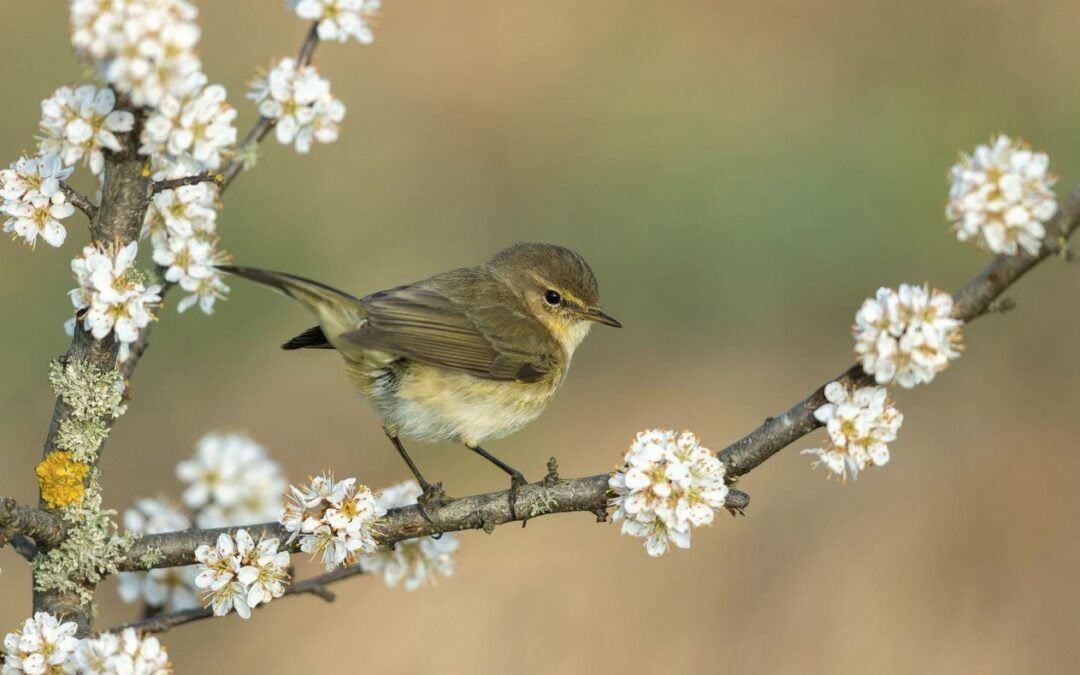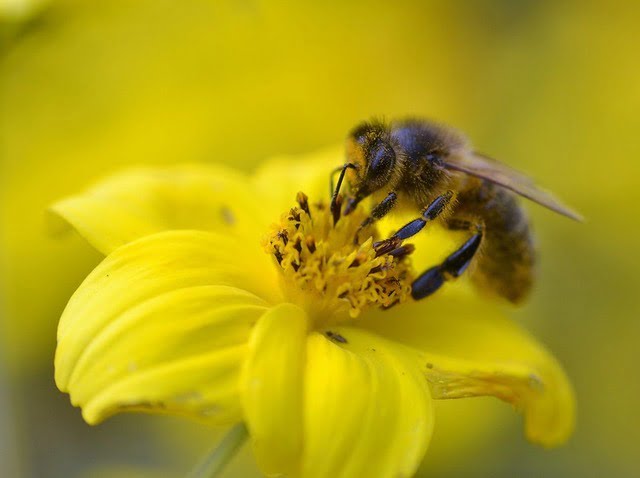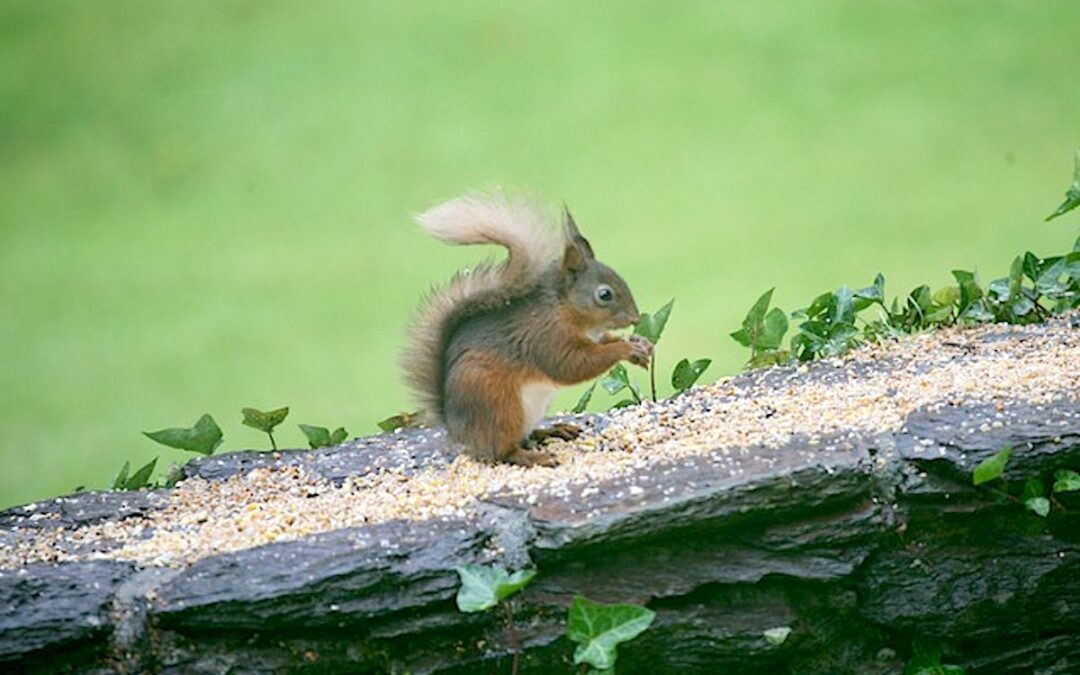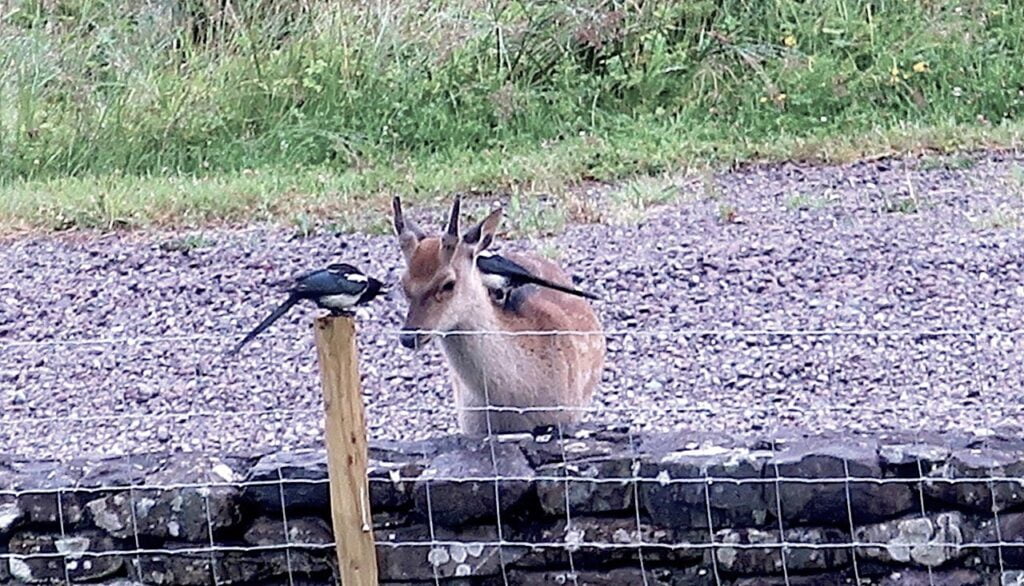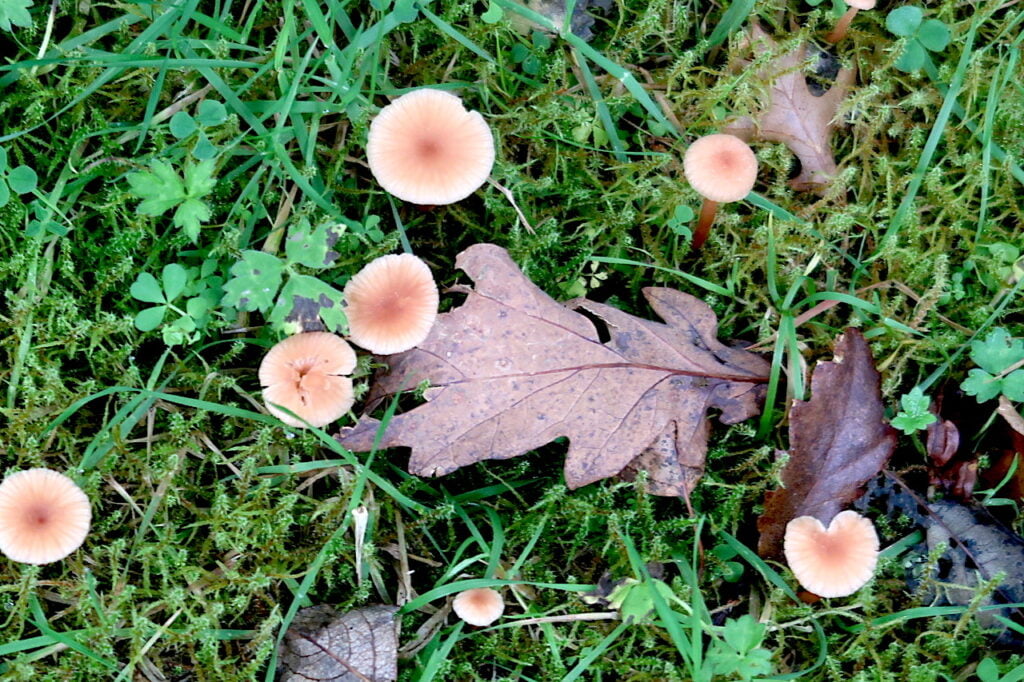
by Andrea Collins | Jan 25, 2024 | Lily
In January 2001 I started looking for a female Jack Russell puppy. Back then Jack Russell terriers weren’t registered with the Kennel Club and therefore couldn’t be sold as pedigree dogs. Instead, they were bred in rural communities to kill mice and rats – and unlike pedigree dogs, who are bred from a small gene pool, retain their character, instincts and hunting skills. They are also good at foraging for food just as their ancient wolf ancestors would have done thousands of years ago. And as the breed hadn’t been standardised the dogs came in all different shapes and sizes. Once I’d decided what I wanted it was just a matter of finding her.
Being January there weren’t a lot of puppies for sale on Salt Spring Island – and frustratingly, no Jack Russells. I was told to wait until spring, but even though it was January I had this strong feeling she would be coming into my life soon; that she was out there, somewhere, manifesting in the ether. I just needed to find her. One Saturday morning in May I planned to go into town and watch the annual Salt Spring Sea Festival. It began with a parade lead by a group of Jack Russells and their owners followed by a lot of organised activities that lasted all day. My plan was get there early enough to talk to some of the Jack Russell owners and ask about puppies, but I slept in that day and by the time I drove into town the parade was over and people were migrating into the local cafes, shops, restaurants, and nearby park where local bands were playing. I grabbed a cup of take-away coffee and walked over to the park. It was such a beautiful sunny day and the atmosphere was laid back and friendly. Lisa, a friend of mine called me over and we chatted for a while before she asked me if I’d seen that man pushing a litter of Jack Russell puppies in a wheelbarrow? She said they were leading the parade. Trying not to choke on my coffee I asked her if she knew who it was, and she said she thought it was John, the lawyer.
It turned out she was talking about John Davies, someone I knew quite well from the Texada logging days, when we were fighting to save 6000 hectares of land from the chainsaws. Lisa and I did a quick walk around town looking for John and his wheelbarrow, but couldn’t find him. At that point I decided to go home and call him.
I probably drove home faster than I should have and worried John had already all sold all the puppies, including Lily – the name I had chosen for her.
As soon as I got through the front door I ran to the phone and called John’s number and he answered right away. It was so good to hear his voice. I asked him about the puppies and he told me they were all still for sale. With a sigh of relief I then asked him if he had any females and he said “Just one”. I felt a strange tingling sensation.
We agreed that I would go to his house the following morning. I walked into his house and found a litter of tiny pups sleeping on a big, soft blanket- all except one. This lone, independent puppy was standing up – nose to the ground, tail up in the air, sniffing around very intently. If he or she wanted to get my attention, it worked. I walked over to see if it was girl or a boy and then I picked her up and said “I’m so glad I’ve finally found you!”
I noticed how comfortable she felt in my arms – as if she had always been there. I expected to take her home with me, as she was eight weeks old, but John explained that his family were ‘hand rearing them’ (socializing them) and wanted to wait until they were three months old and properly weaned. My heart sunk at the thought of leaving her behind.
Two weeks later I called John and he agreed to let me come and collect her.
I carried Lily outside and placed her in the dog bed at the rear of my car and then drove away. She didn’t whine or scratch to get out – she didn’t look worried at all – she seemed perfectly happy to be with me.
When we reached the edge of town I realised I needed to pick up some groceries and pulled into the supermarket car park.
I knew Lily wouldn’t be allowed inside and I didn’t want to leave her in the car alone so I decided to take her in with me. I sat her in the front of the trolley and put a small white towel over her head. She didn’t move – she just sat there and played along with me. I couldn’t help smiling at this little ‘ham’ as I pushed her through the sliding doors and around the aisles. We were perfect ‘partners in crime’.
On the drive back home I realised that without Lisa I might never have found Lily. But then I remembered what my friend Doreen used to say to me : “What’s for you, won’t go by you” and she was right.

by Andrea Collins | Jan 17, 2024 | Lily
There’s no doubt in my mind that Lily was an ‘enlightened’ dog – And I’d even go as far as to say that sometimes she was smarter than me. It was no surprise then that she also became my teacher.
During the fifteen years we spent together she helped me make some adjustments to my way of thinking which in the end made me a ‘better me’ – a better version of my previous self.
Not that I was messed up or strung out on drugs, but I probably needed a helping hand at that time in my life – and I now believe that’s why she came into my life.
My first lesson arrived while Lily was still quite young, and I can only assume she decided to use her stubborn technique to put my self-awareness to the test.
Noticing it was getting late and dark outside, I called Lily in from the garden one evening, I could see her sitting on the grass but she didn’t respond when I called her in. I called her several times but she didn’t respond. I tried raising my voice to a more assertive tone but that didn’t work either. She could clearly see me and hear me, so I why was she refusing to come in.
I began to feel frustrated and angry – I was supposed to be the ‘alpha’. – the leader of the pack and she wasn’t listening to me.
Feeling frustrated I decided at that moment I was either going to keep getting angry and possibly kill her (not that I’d do such a thing) or I was I going to find another way to communicate with her.
Suddenly it occurred to me that I could try a different approach; I could look at her ‘through the eyes of love’ instead of anger/blame etc (an aha! moment) I stepped outside and slowly walked towards her. I bent down and stroked her soft, smooth little head and felt nothing but love for her.
We sat together for a while and then I asked her to come inside. She followed me in and seemed happy. She knew she had taught me something about myself – that we don’t always have to be right or be in control of situations – we can stop things escalating by backing down and choosing to see love instead.
A lesson in “A Course In Miracles” states that “I can choose to see things differently”. It is a simple and yet profound lesson, which I understood for the first time that night. Usually I would not give in or back down with a dog but this time I did.
Now I sometimes wonder if the reasons Lily used to lie on her back and look up at me was to remind me that we can always choose to see things differently. We don’t have to be right or always in control. We can choose to believe if the other person (or in this case dog) is the problem or not. It’s not what happens, it’s how we respond to it. That was a great lesson for me. This also ties in to ‘forgiveness, but more about that another time….

A few days after my first revelation I bought Lily some coloured balls and began rolling them towards her as she sat outside on the grass. She stared at them as they rolled by, and looked unimpressed. I was surprised because i knew Jack Russells were playful and loved their toys, so I carried on gently throwing the balls towards here hoping she’d take the bait, but she didn’t. She just sat there looking bored. Finally, she stood up in an effort to make her point. She grabbed one of the balls in her mouth, held it there for about ten seconds and looked towards me. After making sure I had seen the ball in her mouth, she opened her mouth and let the ball drop to the ground.
Lily was demonstrating to me as clearly as she could that she knew how to catch and run with balls she just didn’t want to do it.
It turned out she preferred chasing and catching mice instead.
I’d watch her outside in the long grass, as she would pounce on the mouse, grab it and then shake it to death. She’d then take the mouse in her mouth and gently but firmly break its neck just to make sure it was really dead. In her mind it was the humane thing to do. Better to finish them off than leave them wriggling around on the ground.
One cold winter afternoon Lily and I walked into the barn to get some horse feed and hay bales to feed the horses. I opened one of the barrels of grain and saw six mice running around inside. I tipped the barrel sideways, just far enough that the mice could escape and run out onto floor.
Lily wasted no time picking them off.. She chased and caught every single mouse in turn and then flung them against the side of the barn to kill them. They sounded like rocks when they hit the wall and fell to the ground, dead.
I have no idea how she came up with the idea of flinging’ them instead of shaking them in her usual manner but perhaps she needed to find the quickest way to deal with six mice in the quickest time possible. (they were gone in about thirty seconds) She had this amazing ability to think on her feet and adjust to any situation.
Lily’s methods of rodent extermination might seem cruel to some, but it was quicker and much kinder than laying out mousetraps or poison bait. Poisoned rodents die a slow, painful death and then their poisoned bodies kill the hawks and owls that feed on them. On the other hand a good “mouser” can kill rodents quickly and efficiently, without harming any other creatures.
And Lily was one of the best.
Here she is looking for mice under the log pile.


by Andrea Collins | Jan 4, 2024 | Electro Sensitivity
Ever noticed how phone masts seem to dominate the landscape no matter where you are? A residential area, retail area, area of natural beauty, phone masts dominate the landscape just so we can stay connected on our mobile phones. Apart from being a “blight” on the landscape, having the convenience of a mobile phone 24/7 has resulted in some of us getting sick.
Up until 2011 my addiction to using a mobile led to a complete breakdown of my body’s ability to mitigate the constant barrage of wireless microwave radiation. My phone was literally making me feel ill – so I put it away in a drawer and began the ‘learning curve’ of learning to live without it.
My reaction to microwave radiation meant I was now called “electro-sensitive” but no-one in the mainstream media seemed to want to talk about us unless we were portrayed as an ‘anomaly’ or a bunch of ‘tin-hatters’ or ‘weirdos; Even today people don’t believe people with ES can feel the radio- frequency signals, and some even begrudge turning their phones off if they are with me. (most are obliging though even if some of them find it a bit strange)
It’s not surprising since the cell phone industry goes out of its way to pay “their” scientists to say there is no correlation between electro-magnetic frequencies (EMF’s) and physical harm, but of course there are many credible studies that prove the opposite is true. Dr Olle Johansson, a leading researcher from Stockholm, Sweden, is the author of The Bioinitiative report an important peer reviewed study which conclusively proves that EMF’s do cause physical harm.
Johnanssen is an associate professor in the Department of Neuroscience, at the Karolinska Institute (famous for its Nobel Prize in Physiology and Medicine) in Stockholm, Sweden and is been considered to be a world-leading authority in the field of EMF radiation and health effects.
He says that as early as the 1930s, EHS (Electrohypersensitivity) symptoms were observed in people working with radio and electricity, and with military radar in the 1940s. And that for several years, there was a lot of evidence pointing out that this type of artificial, modern, man-made electromagnetic fields which did damage molecules, cells, tissues, organs, animals, plants, bacteria, etc.”
Agencies like ICNIRP (International Commission on Non-Ionizing Radiation) and other regulatory government agencies who set guidelines for consumers tell us EMF’s can be potentially carcinogenic but then leave it to the consumer to decide whether he and his family should be exposed, or not. “All of them have delegated responsibility to society. For their part, radiation protection authorities in many countries say that EMR is safe, but that, for security reasons, perhaps we should not use the mobile phone so much, and we should keep it away from our body, use hands-free devices, etc”
In Sweden impairments are viewed from the point of the environment. That means that no human being is in itself impaired there are instead shortcomings in the environment that cause the impairment that it is the environment that should be treated, not the people, and the people are completely normal and healthy but they react to inferior environments.”, stated Dr. Johansson in the conference Health Effects of EMF: A Neuroscientist’s Views.’
It seems inferior environments is what we have been given and participating in the outside world has become more and more challenging over time.
After being diagnosed as being electro-sensitive I only needed to avoid being around people using their smart phones (it’s easy enough to walk away and stop using wi-fi) But then they gave us smart meters. These meters emit very strong radio frequency signals, 24/7. and then to add injury to insult the telecoms upgraded all their phone mast antennae to 5G.
In 2018 I was living in a lovely old village in Somerset, England, where most a of the houses had thatched roofs – and there was a lovely little church that dated back to the 13th century. Sadly, after a non-stop, mass media campaign in the UK everyone in the village decided to install a smart meter.
The year long media campaign convinced people that they were better off going digital and saving money, which was not the case in British Columbia, Canada, where their bills came in with higher readings than from their old reliable analog meters, so there was actually an increase in recorded usage.
I was naturally frustrated as I’d already left my home behind on Salt Spring Island thanks to a mandated smart meter rollout and now, after five years in the UK, It looked like I would have to move again. And even though they weren’t mandated in the UK everyone fell for the media campaign and believed they were more convenient and would save them money.
The pain from the meters in the village was so bad I spent the next 6 months living in the kitchen at the back of the house and the bedroom above. I looked at the map and wondered where I could go next. I thought about relocating to the Isle of Skye, the Wilds of Scotland, the Yukon! In the end I decided to move to Ireland. It was closer and they didn’t have smart meters (yet) I told myself that if I could rent a house in a sparsely populated area that I might be alright. After a lot of searching I found a house in the mountains of South Kerry surrounded by grazing sheep.
I quickly settled in, and enjoyed trekking into the local town with its independent shops and restaurants – but then something worse happened. All the masts in and around town were upgraded to 5G and they were incredibly powerful signals.
The old 3G and 4G masts in town had never bothered me. I could spend hours there and not feel a thing, but as soon as 5G antenna were installed their effect on me was so painful and devastating I had to avoid going there.
So in 2021 after only a year after moving into my present home I was literally trapped in and around the back roads and couldn’t get into town. And worse still there’s been a recent application to erect another 5G mast just a kilometre away from my home. At that distance I don’t know if it will affect me or not. It might be far enough away (and I have lots of trees around my property which are known to interrupt 5G signals) but If I begin to get heart palpitations, migraine headaches, insomnia and other nasty symptoms, then I will have to move again – and possibly leave my house before it is sold. The question is where do I go next? The local council will be making their decision on January 16th.

by Andrea Collins | Dec 5, 2023 | Electro Sensitivity
It was only last year that a phone mast application was submitted to Kerry County Council seeking permission to build a 30 meter latticed mast, ie “eyesore right next to my property, a small residential surrounded by farmland. A large group of us living in the area lodged our objections to council and thankfully they rejected the application.
Now they are back again with the same application only they’ve moved the location one mile away. That might seem like a long way, but those signals are intended to cover a large area – and for some reason 5G really hurts my head. It also affects my nervous system. I suppose the best analogy is to say it’s like having a peanut allergy. I can eat peanuts without any side effects at all but for someone with a peanut allergy they are deadly.
So my new objection will be based on the fact that the proposed mast will be a gigantic eyesore on the Kerry Way, and because I’m electro-sensitive, and could be forced to move if the mast is built.
The Kerry Way is a 214 km circular walking trail that can be accessed at different points including the country road that I live on. People also come here walk and to kayak along the Kenmare river (an inlet) and take in the peaceful beauty of the surrounding area. Why build a huge mast here?
This is where the eco-tourist traffic flows and there’s already enough signal for anyone exploring the area to load maps or check messages. What will a 30 metre mast add to their experience other than be a visble blight on the landscape, in an area that has remained virtually unchanged for centuries?
And since the Kerry Way is very clearly signposted and visible on OS maps does anyone really need the intrusion or the extra download speed of an ugly 5G mast? People come here to unwind and slow down. They are not in that much of a hurry
I’ve already left two homes (and two countries) thanks to the proliferation of smart meters, and I really don’t want to continue being a “wi-fi refugee”. If the telecoms don’t slow down their attempts to saturate every square inch of this planet, those of us who live with ES will be forced to live in camper-vans. In fact many already do. Why does convenience always trump our right to live a healthy and “radiation free” life? Pretty soon there will be “nowhere to run (bay-bee) nowhere to hide”.
Sure, there will always be those who can’t stand the idea of a dropped phone call or a ‘quiet’ zone, but that dropped call is a potent reminder that life exists outside of, and beyond their mobile phone service, offering a glimpse into the world that existed before everyone had a smart phone clamped to their ear.
In 2011, when I became over-exposed to wireless technology due to a lifestyle change, I was told I had become “electro-sensitive” and that there was no cure or magic pill I could take to make me feel better- that the only thing I could do was stay away from everything wireless especially my mobile phone.
The migraine headaches I had been experiencing were so bad it didn’t take much to persuade me to trade “convenience” for a pain free life. And it wasn’t too difficult to disable the wi-fi on my laptop (“disable”, not turn it off in the drop down menu, there’s a big difference) and buy a modem that had no wi-fi capabilities (a little more difficult, but doable) and finally plug in my ethernet cable. I let go of the headaches, burning face and frightening heart palpitations, but letting go of my addictive mobile phone wasn’t as easy.
I was living on Salt Spring Island at the time and used to take the ferry over to Vancouver every couple of weeks. There was always time to kill at both the ferry terminal and during the ferry ride which lasted between two and a half to three hours.
The ferries served food in two different locations which always involved standing in line, and as I often travelled alone I would invariably check my phone while I was waiting. It took me a while to remember to bring a book with me, and find other ways to pass the time without calling, texting or scrolling through my phone. I had to re-learn how to simply enjoy reading or gazing out at the surrounding scenery- the north shore mountains, the ocean and the seagulls that escorted us from terminal to terminal all the way across the Georgia Straight and into Vancouver.
Thankfully, these days I don’t even think about having a mobile. I look back and laugh at the time I walked into a parking meter while reading an email on my phone. I feel the way I did before mobile phones became the “new normal” and took over our lives – I feel the way I did in my twenties and thirties when we talked to each other instead of a gadget. Yes, there were landlines but people could only call from home or from a phone box, if they were out. It wasn’t such a big deal. I grew up that way. Back then there were no distracting ring tones interrupting a meal or time with family and friends, and because there were no distractions I think we were more connected to one another. We didn’t have to make excuses like “I’m sorry I’m going to have to take this call” and leave the table in a restaurant. We were connected to reality not “virtual” reality.
I think our lives have been fractured by wireless technology,and I worry about young kids who are left alone with smart phones or tablet to play with for hours on end. There are many scientific studies that show wireless, microwave radiation can be harmful to young children, as their brains haven’t fully developed.
There is also an excellent website: Electromagnetic Sense Ireland which is worth checking out because you won’t find this information in the mainstream media. I’ve also posted additional info on the links page.

by Andrea Collins | Nov 14, 2023 | We Are The Ark
I was very lucky to find a property with so many native trees and shrubs growing naturally and that have evolved over time: silver bIrch, Scot’s pine, rowan, ash, holly, brambles, ivy, ferns, and my two very old oak trees that could have been here since the house was built in the 1860s. I’m very grateful to all the previous owners who left them for future generations and as a sanctuary for wildlife.
But not all the trees here are native. Three or four maples were planted around forty years ago, and one of them, a red maple, lives in a giant hedge along with some laurel, rhododendrons (horror!) Scots pine, silver birch and alder. The red maple has completely merged with everything else in this giant hedge and it’s branches have spread outwards instead of upwards. It has literally become “at one” with the hedge.
This mixed bag of vegetation provides a natural barrier between me and the adjoining property and is full of holes made by the large birds flying in and out. They probably build their nests in there too. It provides safety and shelter and there are openings on the ground where birds, especially pheasants, emerge like royalty, into the grassy meadow. So although much of the hedge is non-native, it naturally supports birds and other wildlife, and for that reason I would like it to stay.
Looking at my property with newly opened “ARK” eyes I can easily see that the imported species don’t really belong here, but I don’t have the heart to take an axe to them, especially when compared to some of nearby gardens which are full of 100% imported species. In these gardens there are no native trees or shrubs anywhere – nothing that would grow naturally, in ireland, or in this area, anyway. Those types of gardens are for show really and look out of place in this rural environment – especially since our back roads are lined with hedgerows and tall trees. This make these “artificial” gardens look even more out of place. Each plant growing as lone specimens from another country separated from everything else growing beside them: A rose here, a hydrangea there, some pampas grass growing in the corner. There’s no cohesion, no ecosystem, no “wildness” and therefore no wildlife. It looks and feels lifeless, like a relic from the past.
Recently, I decided to bring in a few more native trees: I chose hawthorn, hazel and yew trees without knowing very much about them. The hawthorn and hazels were placed in the meadow in front of the tall hedge and the yews were placed further away near my driveway. They’ll join an existing, much smaller (and sparser) hedgerow made up of holly, brambles, ferns and a couple of spindly Hawthorn trees. I think my neighbours cows have eaten a lot of what used to be growing there, but now he’ll have to replace the couple of strings of barbed wire, he’s using, to keep his cows from munching on my hedgerow, with something more substantial – because the yew tree is poisonous. I hope being unattractive to the farmer and his cows they will have the opportunity to grow and flourish.
All the newly planted trees look very much at home now they’re planted in. They’ve brought their own special and sacred energy into the garden. The squirrels and jays will love the hazel nuts and the hawthorn trees will look pretty in mid May as they come into flower. I’m looking forward to watching them grow.
On reading about Irish trees I discovered that hawthorns are called “Fairy Trees” as it is believed fairies live under the tree and act as its guardians. It is considered to be bad luck to cut one down, or bring branches of flowers into the house. It’s a tree which celebrates Spring and one of the most sacred trees in Ireland. It also symbolises love and protection. Hawthorn blossoms used to be worn by brides, in their hair, or in a bouquet to symbolise love.
The hazel nut tree is also a sacred tree and is associated with wisdom and inspiration, and is said to be “cloaked in a powerful magic which can imbue those who eat its fruit.”
The yew has two meanings: death and immortality. Its association with death and re-birth gives it a special place in Irish culture. They are also one of the oldest living species of tree with some dating back a thousand years or more. (That’s incredible!) However, their needles are poisonous- in fact every part of the tree is poisonous, and they were often planted in graveyards, which gives the yew a solemn association with death. It is a sacred tree.
I think the yew is a beautiful tree, soft to the touch and yet very strong and heavy, as we found out when it came to planting them!
And perhaps they are here to remind us that “all life” evolves in natural cycles – from birth, death, to rebirth and immortality. See the links page for more information on Irish Trees.
See the links page for more information on Irish Trees.

by Andrea Collins | Nov 9, 2023 | We Are The Ark
My property came with a lovely old stone cottage although I’m told it was originally used as a coach house and built around the same time as the house in the 1860’s but no-one seems to know for sure. History, here in South Kerry, seems to be more “anecdotal” than based on facts or anything written down on paper.
One evening I stepped outside my house and noticed something flying above my head only to disappear and come back around again. Then I realised that it was flying too fast to be a bird and must be a bat…and more than one bat. These little “blurs” were whooshing around the house at the speed of light feasting on insects as they went round and around.
I was amazed at how well they navigated themselves at such high speeds between the narrow corridor of the house and nearby trees. I watched for a while and wondered if they might be living inside the house but I didn’t stay long enough to find out.
A couple of evenings later I saw bats leaving the cottage via a small opening just below the roof tiles and then heading over to the house so I knew they were living there and most likely in the attic. I watched again as they headed over to the house before flying around in circles again.
Because these little guys eat insects as they fly through the air its very important we keep as many trees and bushes on our patch of land, as possible – and trees also provide important habitat for bats; it’s where they would have originally evolved, and can still be found today, usually in old forests. and woodland areas.
Bats in Ireland are a protected species and it’s illegal to disturb or remove their nests but of course some do. My own bats have a secure home in the cottage and all I have to do is keep the insect population healthy. I will do my best!
The bats are a welcome addition to my ARK
In July of this year I noticed bees buzzing around a small opening just above a bay window at side of my house. I wondered what they were doing there? They seemed very busy and animated and I wondered if they were doing “a recce” – sussing out a suitable place to live.
I pulled out a jar of local honey and found the bee-keepers name and number and called him right away I asked him if he could take the bees away from my house as they seemed very agitated. He came over right away and I asked him if he could put them in a box and move them to a different location… but after looking at the situation he said “I’m sorry it’s too late to move them – the queen is already inside the house. ” What????
He then told me that they were little black honey bees, native to Ireland, and that if I wanted them removed I could ask pest control to come by, but they would need letter from a bee-keeper saying they were a nuisance and or dangerous and needed to be removed. “Why a letter” I asked? and he said “Because they are a protected species”. Oh!
I didn’t like the idea of poisoning these little creatures but wasn’t sure I wanted them buzzing around the house all day either. Noticing my indecision the bee-keeper said “if you don’t mind them and they’re not bothering you too much you can just leave them there…lots of people here live with bees in their homes.” What?? I’d never heard of such a thing …. people living with bees in their homes? Only in Ireland, I thought to myself.
I thought about if for a while and then reasoned that they weren’t right above the front door or in a high foot traffic area and probably wouldn’t bother anyone at the side of the house, so why not let them stay? I realised as well that there had never been a lot of bees on the property to begin with, and having my own pollinators would be an asset to the ARK, especially since none of the apple trees bore fruit this year. I’d also be helping an endangered species. “Okay” I said, hoping I’d made the right decision `”Let’s leave them alone and let them settle in” He seemed pleased and said “Of course if they become a problem and need to be removed……” I said “I’m sure they’ll be fine ” and then I actually began to feel excited at the thought of “living with bees”. I was also flattered that the Queen Bee had chosen my house as the best location for their new hive.
So, just like the foxes who showed up and reduced the rat population, the bees came in at the right time to help pollinate my ARK.
It’s almost as if Nature has the intelligence to call in specific species – “the rooted and the unrooted” whenever and wherever she feels they are needed. Maybe all natural life is somehow connected and gifted with the knowledge to make intuitive and important decisions to heal the ecosystem when it is out of balance?
I’m going to become a member of the Native Irish Honey Bee Society and Bat Conservation Ireland to find out more about these “mysterious” creatures now they are a part of my life.
You can also find more information on Native Irish honey Bees and Bats in Ireland on the “links” page.

by Andrea Collins | Oct 25, 2023 | We Are The Ark
“Build it and they will come ” God’s words to Noah on building the Ark.
Rewilding our gardens and giving them back to Nature is the first important step we must take in recovering and restoring lost eco-systems which have slowly disappeared over time. The size of our land or garden doesn’t matter, but by giving our land back to Nature, we are giving it the chance to return to its original or natural state. We are also giving wildlife an opportunity to connect with its original habitat – the place it originally evolved. Most of the work will be done by Mother Nature herself making it very easy for us to throw in some small changes ourselves giving her the help she needs, and before long the journey from a neat and tidy but lifeless patch of land into a living Ark will be complete.

My own journey into rewilding began when three years ago after moving to a five acre property in South Kerry. The land was mostly laid to lawn although the house was built in the 1860’s and was home to many mature trees including two large oak trees near the house which were probably planted around the same time. A perimeter of mature woodland encircled the property. The large expanses of lawn had been meticulously taken care of and cut right up to the boundary trees. Cut so often there was nothing else growing except grass. The mature shrubs had been dead-headed and trimmed back to keep them looking “tidy”; And the old dry stone walls were attractive but lifeless. Surprisingly (or not surprisingly) there were very few birds on the property; it was “eerily quiet” considering the amount of trees there were. But I am grateful that the previous owners didn’t cut them down – especially the perimeter woodlands. Here there was hope as they had left the bracken, blackberry bushes, and old apple trees to grow freely. With so much grass to cut the first thing I did was let the largest section of the lawn grow out and do its own thing.
A few months later I liberated another large section of lawn . It didn’t take long before they began taking on a life of their own. All kinds of interesting things started growing there and most of it was unknown to me. It was time to buy some guidebooks. Some visitors would look shocked as they eyed the long grass now swaying freely in the wind. “It’s for the wildlife” I would tell them “they need wild places to wander around in and forage for food”. After rewilding those areas I was surprised at how pretty they looked the following Spring. They transformed into natural wildflower meadows, and they were attracting pollinators- butterflies, moths, bees and other insects.. And once the bird feeders went up the birds came too….lots of small finches at first, and then larger birds started swooping down for the peanuts on the ground. I used to joke that my property was beginning to look like Heathrow airport. Groups of pheasant wandered in from the woodland areas and then deer. They came for the tall grass but also the peanuts (I didn’t know deer ate nuts but I was on a learning curve) I watched with excitement as hooded cows, magpies, jays, robins, finches, collared doves, deer, foxes, shrews (in the stone walls) and little red squirrels all became regular visitors to my patch of land. The birds grew so loud in the Summer I would go outside just before dawn and sit there listening to an amazing orchestra of different bird song – even the pheasants would chime in with the odd squawk. It was one of the most beautiful things I have ever heard. The birds were now nesting in the trees all around the property and I watched as their numbers grew. As Summer gave way to Autumn berries ripened on trees and bushes and apples fell to the ground. There were far too many apples for us to eat but eventually passing deer and foxes found them and feasted on them (I didn’t know foxes ate apples either).

I’d left the last section of grass for our three dogs, and put wire fencing in front of the small stone wall to give them a defined space as there were no perimeter fences. I cut the grass less often in this area and gave the bees a chance to collect pollen from the clover, buttercups and daisies that appeared giving life to the grass and the soil. Without perimeter fences deer and foxes were able to travel unhindered across several property boundaries as they foraged for food. The foxes also found a nest of rats who had moved in to eat the bird seed and thankfully they were master hunters and were able keep their numbers down. Over a couple of years the natural eco-system buried beneath the surface of this property came back to life. I stopped trimming the shrubs and bushes and allowed brambles grow around them. Wildflowers, tree shoots, fungi, birds, ferns, insects small and large mammals all showed up to play their part in forming a new eco-system. The transformation happened so quickly and with so little effort on my part It was hard to believe this once silent and lifeless property was now a vibrant, thriving and complex patch of land.
Four years on this property is still evolving and changing. Recently I bought some yew, hazelnut and hawthorn trees – all native species and will plant them out in the wild grassy areas. I think they’ll look great. “Individuals can’t save the world alone. But, if millions of us work together to save our own patch of earth -then we really have a shot! How do we do it? With Acts of Restorative Kindness(ARK’s) Our own personal ARK is “a restored, native ecosystem. It’s a thriving patch of native plants and creatures that have been allowed to reestablish in the earth’s intelligent, successional process of natural restoration. Over time, this becomes a pantry and a habitat for our pollinators and wild creatures who are in desperate need of support. The ARK-building actions are within our control” Mary Reynolds “We are The Ark.” The Dawn Chorus (feat. Pauline Scanlon & The Cork Opera House Concert Orchestra)
